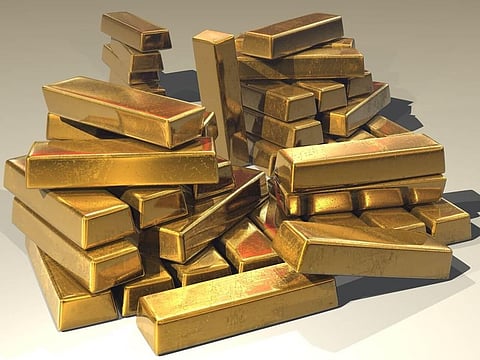
- Home
- न्यूजग्राम
- NewsGram USA
- India
- World
- Politics
- Entertainment
- Culture
- Lifestyle
- Economy
- Sports
- Sp. Coverage
- Misc.
- NewsGram Exclusive
- Jobs / Internships

Gold traders are often a group of investors who go against the grain, taking profits in times of turmoil and trouble, then going into a long-term holding pattern during calm decades of relative economic stability. But when the inevitable crashes, recessions, crises and downturns occur, the gold bugs swing back into action, taking profits on temporary rises and upward spikes. If their timing is right, they sell just before the next round of positive economic news arrives and wait for the next market implosion.
Historically, gold tends to do well with people view it as a safe haven for parking money, as the recent COVID pandemic proved. In mid-March of 2020, just before the global health crisis became fully established, the metal's value was hovering around the $1,485 mark. Then, as exchanges around the world started to absorb the reality of the bad news, the yellow metal took off, hitting a peak of $2,070 in early August.
Follow NewsGram on Quora Space to get answers to all your questions.
Along the way, there were pull-backs and retrenchments and sideways moves as investors tried to guess their way through the volatility. Eventually, the big surge materialized in the form of a $280 rise that was essentially a straight line, extending from the first week of July until the first week of August. What does the near-term and long-term outlook hold for those who prefer to buy, sell, and hold the most popular precious metal of all time? Here are a few trends and observations that might point toward some possible profit-taking opportunities for online gold trading enthusiasts.
Gold's price swings up and down almost in cyclical, predictable patterns based on these hot-and-cold headlines. Unsplash
There are good reasons to be optimistic about the ups and downs of gold's recent price action. One of those factors has to do with buying at the bottom of dips. It's one of the oldest strategies in the market and has been used by traders of all stripes. It can work especially well for precious metals during a protracted crisis like the COVID pandemic.
Recent U.S. economic headlines have been a mixed bag of positive unemployment numbers mixed with not so great job force data. Gold's price swings up and down almost in cyclical, predictable patterns based on these hot-and-cold headlines. Buying after a spate of negative news, especially after it's had a day or two to settle, is one of the safest ways to make a series of small gains in times of uncertainty and volatility.
People are looking for a way out of the virus crisis and tend to glom onto every shred of positivity. Then, when it turns out that those otherwise excellent unemployment reports weren't so wonderful after all, the public initiates another round of pessimism. As long as the global health situation continues, it's possible to ride these small up and down pricing waves.
The upcoming presidential election is certain to be a hard-fought, highly partisan contest that offers voters two extremes of philosophy. As early November draws near, there will be more and more anxiety in the minds of all voters as they worry that the outcome won't be what they want. After a winner is declared, a huge weight of uncertainty will be gone. That could mean substantial downward pressure on the price of all precious metals, at least for a few months. For gold traders, the next several weeks might mark one of the best buying opportunities as tensions, uncertainty, and social angst hit all-time highs and millions of average investors seek the comfort of all things golden. Selling a day or two before election day could be the second part of the short-term timing cycle within this temporary upswing.
Since late 1999, the price of the yellow metal has risen from $256 per ounce to a recent high of $2,070 per ounce, a staggering 21-year increase of $1,814 dollars. Unsplash
People who view precious metals as a long-term buy opportunity are assuming that things will always get worse, at least economically. It's hard to deny their big picture philosophy. Since late 1999, the price of the yellow metal has risen from $256 per ounce to a recent high of $2,070 per ounce, a staggering 21-year increase of $1,814 dollars. That translates to $86 per year on average, but in percentage terms it's literally a staggering statistic. The metal's price multiplied itself eight times during those 21 years.
What if that happens again between now and 2041? It would vault the bullion's price all the way above $16,000 per ounce. For many, the long view is what makes buying and holding a wise choice. Whether you're in the short-term or long-term camp, there's never been a better time to be in the gold market. No matter what happens, there will be plenty of profit-making opportunities. Whether buying into the low ebb of price dips, timing political and economic news, or opting for the long hold, it's up to each trader to choose which technique makes the most sense.
(Disclaimer: The article is sponsored, and hence promotes some commercial links.)
